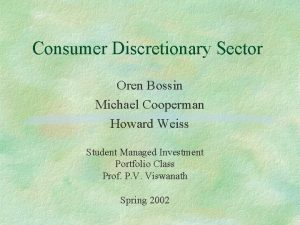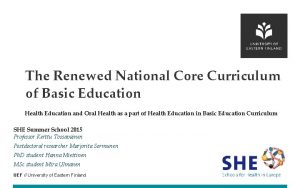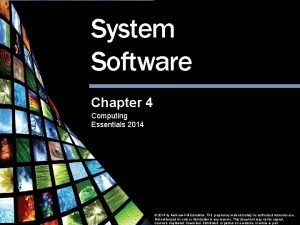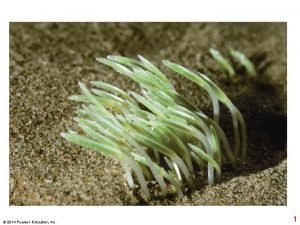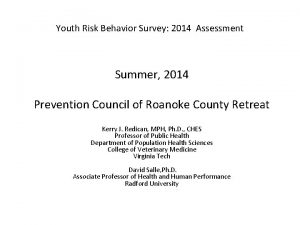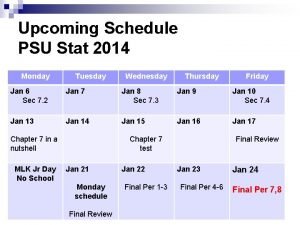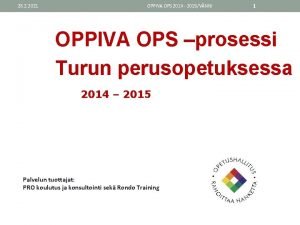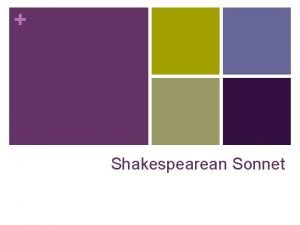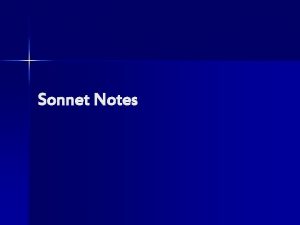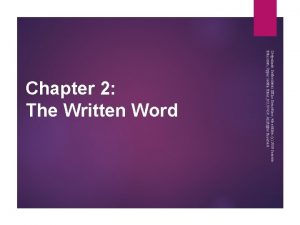Sonnet 61 Michael Drayton S Cooperman 2014 Michael










- Slides: 10

Sonnet 61 Michael Drayton S. Cooperman, 2014

Michael Drayton 1563 -1631 • Drayton is considered an important minor poet of the 17 th century, second only to Sidney, Spenser, and Jonson. • As a writer of many historical poems, popular interest in him waned. • He was socially inferior to Shakespeare and lacked a university degree, so he worked as a servant in the home of of Thomas Goodyer and later as a secretary to Sir Walter Aston. • Drayton’s sense of truthfulness failed to earn him money, but he did have the respect of his fellow writers. S. Cooperman, 2014

background • Drayton’s sixty-three sonnets are in a portfolio titled Idea; Sonnet 61 is considered the best. The rest of the sonnets are mediocre. • Sonnet 61 is assumed to be addressed to Anne Goodyere who later became Lady Rainsford. • The sonnet describes his passion for Anne and her failure to reciprocate for he was poor and she was of noble birth. S. Cooperman, 2014 bryanbaldwin. hubpages. co m

Sonnet 61 quentinmccall. com S. Cooperman, 2014 Since there’s no help, come let us kiss and part Nay, I have done, you get no more of me, And I am glad, yea, glad with all my heart That thus so cleanly I myself can free; Shake hands forever, cancel all our vows, And when we meet at any time again, Be it not seen in either of our brows That we one jot of former love retain. Now at the last gasp of love’s latest breath, When, his pulse failing, Passion speechless lies When Faith is kneeling by this bed of death, And Innocence is closing up his eyes; Now if thou wouldst, when all have given him over, From death to life thou mightiest him yet recover.

Structure • The form follows the Elizabethan sonnet sequence of three quatrains followed by a couplet. • The rhyme scheme also follows tradition: ABAB CDCD EFEF GG. • The first eight lines (octet) comprise one sentence, followed by another sentence of six lines (sestet). kenyanbachelor. blogspot. com S. Cooperman, 2014 • The theme, however, is similar to Petrarchan sonnets as the speaker’s lover is unresponsive. This makes the concluding couplet unusual compared to other sonnets because the speaker asks for another chance.

askmen. com Monosyllabic words reveal his simple, yet direct, message. Abundance of caesura and the repetition of “glad” reflects the speaker’s attempt to convince himself that he is happily free. Since there’s no help, come let us kiss and part Nay, I have done, you get no more of me, And I am glad, yea, glad with all my heart thus The choice. That diction— “since”—places the octet in the past. S. Cooperman, 2014 so cleanly I myself can free; The only two-syllable words in the first quatrain place emphasis on the speaker’s need to separate himself. Imperative stresses finality of the relationship.

onlinefreecomputers. com Imperatives attempt to show certainty in speaker’s response to rejection. Shake hands forever, cancel all our vows, Adverbs set time frame and hint at finality of love. And when we meet at any time again, Be it not seen in either of our brows That we one jot of former love retain. Choice of diction, “jot, ” shows force, whereas the inverted syntax reveals his attempt to convince himself. S. Cooperman, 2014 Synecdoche attempts to distance himself from pain and reduces significance of the relationship. It also avoids the eyes, which may reveal too much emotion.

Alliteration of “love’s latest” creates a breathlessness and resignation whereas the alliteration of “pulse…Passion” add poignancy. drjudithorlog. com Caesura reflects the “pulse failing. ” Now at the last gasp of love’s latest breath, When, his pulse failing, Passion speechless lies When Faith is kneeling by this bed of death, And Innocence is closing up his eyes; Tone becomes melancholy as speaker employs personification to convey images of death—death to emotions that make one feel alive. S. Cooperman, 2014 Inverted syntax places emphasis on “speechless” for there is nothing left to say.

makinghimadoreyou. com Caesura reflects his desire to reconsider. Now if thou wouldst, when all have given him over, From death to life thou mightiest him yet recover. Inverted syntax places emphasis on his feelings of devastation. S. Cooperman, 2014 This volta, or twist, adds a surprise to the sonnet. Though the speaker gave the impression that all has ended, he reveals in the couplet that the relationship could revive itself if she changes her mind.

Works cited quotko. com http: //ardhendude. blogspot. com/2012/07/michael-draytons-since-theres-no-help. html http: //aspoetryanalysis. weebly. com/index. html http: //literatureencore. net/? p=74 http: //www. poetryfoundation. org/bio/michael-drayton S. Cooperman, 2014
